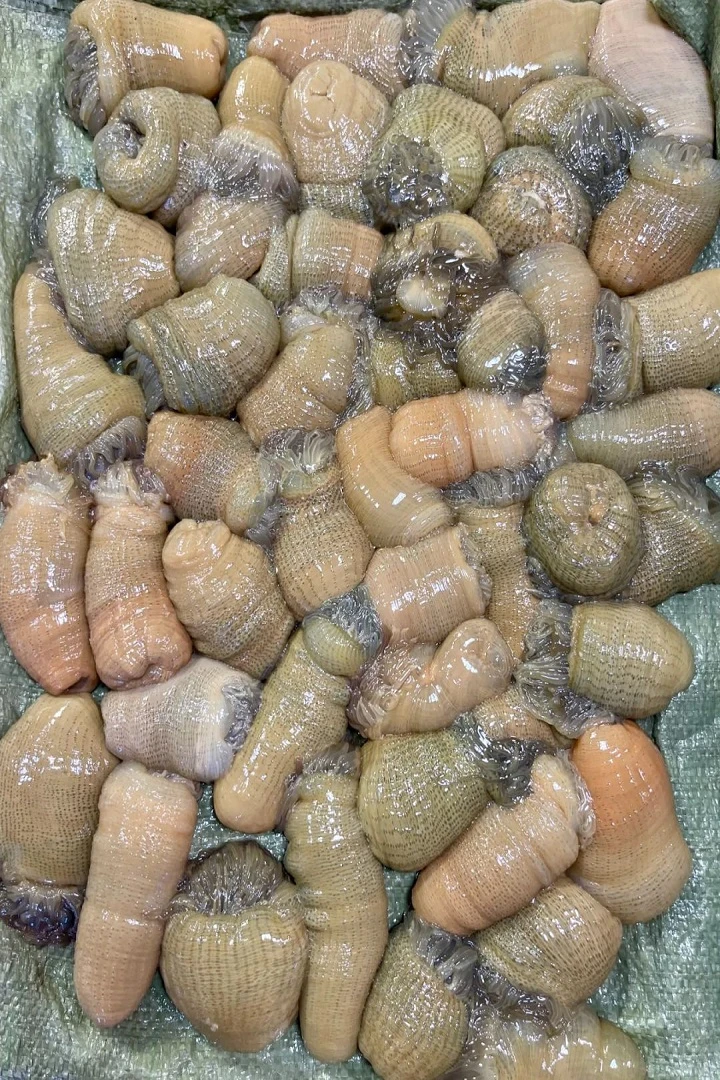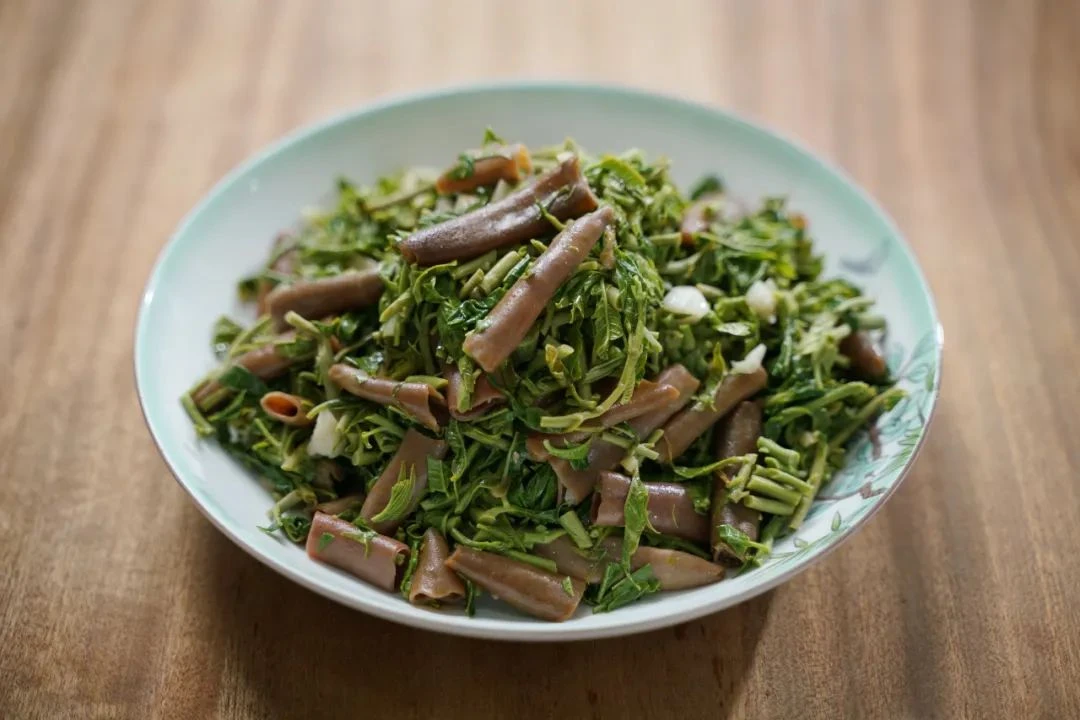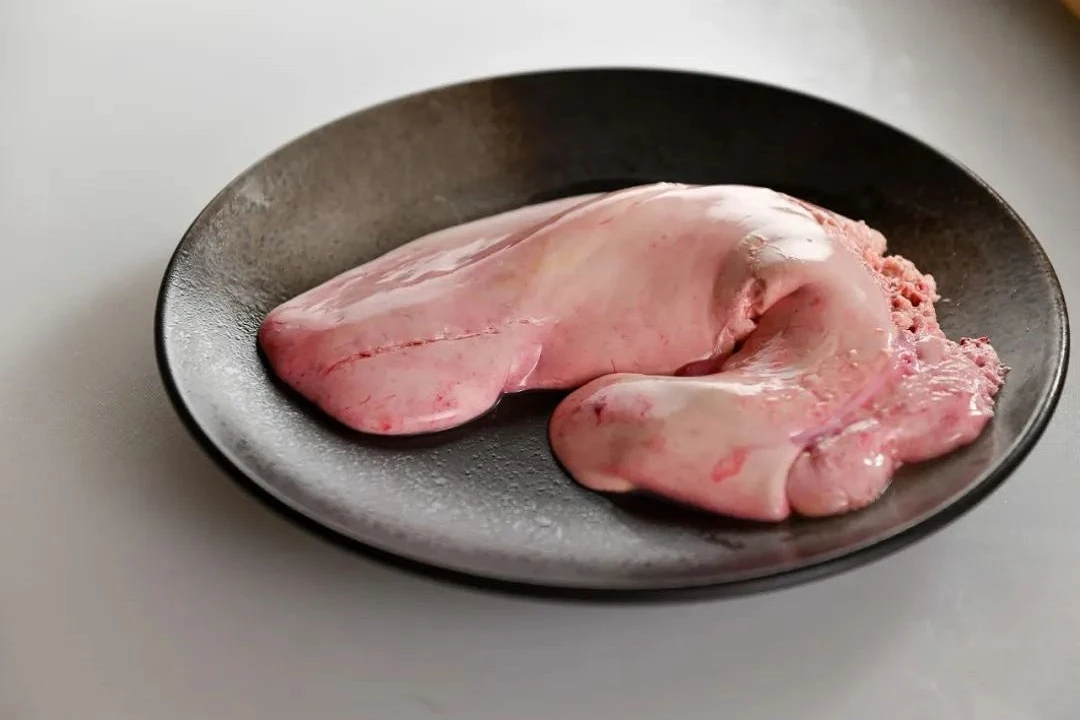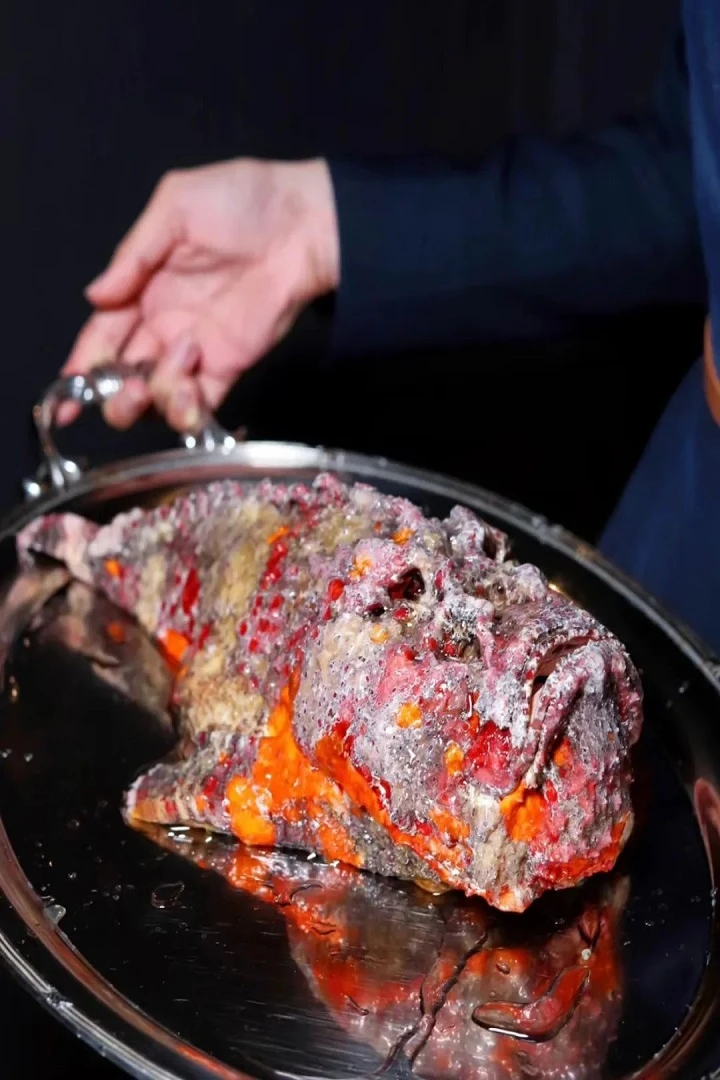In Taizhou's Songmen Seafood Market, the air is filled with the briny aroma of the ocean and the lively chatter of vendors and customers. Amidst the bustling stalls, an array of seafood waits for eager buyers. One particular stall catches the eye with its peculiar offerings. The vendor, speaking in a mix of broken Mandarin and local dialect, presents a selection of seafood with a proud grin, but it's the unassuming "ugly" seafood that truly steals the show.
Among these, the "sand garlic" or shaggy squid stands out. Its appearance might make one cringe—a mass of grayish, mucus-covered tentacles that resemble discarded garlic cloves. Yet, beneath this off-putting exterior lies a culinary gem that has been transforming local perceptions of seafood. Despite its unappealing looks, the sand garlic is a testament to the notion that beauty is not the only measure of worth.

The Culinary Alchemy of Sand Garlic
In Taizhou, this seemingly unappetizing sea creature is transformed into a delicacy through a traditional dish known as Sand Garlic Bean Noodles. The preparation involves stir-frying sand garlic with pork fat, fresh bamboo shoots, and mushrooms. The gooey, translucent tentacles are quickly sautéed, and their inherent flavors are melded with local bean noodles, creating a dish that is as flavorful as it is surprising. The rich umami flavor of the sand garlic infuses the noodles, giving them a unique oceanic essence that belies the ingredient's rough appearance.
When this dish is prepared in local households, the sand garlic is often cooked in a more rustic fashion. It's thrown into a pot with tofu and simmered, allowing the sea's natural saltiness to permeate the broth. The result is a deeply satisfying soup, often clouded and murky, but bursting with a savory flavor that locals revere. Despite its unappealing look, the dish is a local favorite and a symbol of the wisdom in valuing taste over aesthetics.
The secret to sand garlic's appeal lies in its ability to elevate otherwise mundane ingredients. The gooey texture and distinctive flavor of sand garlic infuse the bean noodles with an irresistible depth, making each bite a revelation. The dish's success is a reminder of how traditional cooking methods and local ingredients can combine to create culinary wonders.
The Allure of the "Ugly" Fish: The Anglerfish (鮟鱇鱼)
Another contender in the "ugly seafood" category is the anglerfish. Known for its grotesque appearance, with a bloated, toad-like body and a gaping mouth filled with sharp teeth, this fish was once discarded by fishermen. Its hideousness overshadowed its potential value. However, as seafood enthusiasts and chefs have learned more about its unique qualities, the anglerfish has gained recognition for its exquisite liver, often compared to foie gras in its richness and flavor.
When properly prepared, the anglerfish liver can be a luxurious addition to a meal. Steamed with sake and garnished with a touch of green onion, it offers a velvety texture and a delicate flavor that contrasts sharply with its fearsome appearance. The flesh of the anglerfish is also highly regarded in hot pots, where its tender texture and mild flavor provide a delightful contrast to more conventional seafood.
The anglerfish's transformation from a discarded nuisance to a prized delicacy highlights the evolving attitudes towards seafood. What was once considered a culinary misfit has found its place in high-end restaurants, proving that even the most unappealing ingredients can offer extraordinary flavors when treated with respect and skill.
The Hidden Treasures of the Sea: Stonefish (毒鲉)
The beauty of "ugly" seafood extends beyond these examples. Another rare find in the coastal markets is the stonefish, known for its venomous spines and camouflage capabilities. Its tough exterior and dangerous reputation make it a challenging catch, but its flesh, when carefully prepared, reveals a tender and sweet flavor. The high risks involved in handling and cooking stonefish only add to its allure and rarity, making it a prized item for adventurous diners.
Stonefish is a prime example of how danger and beauty can coexist. The venomous spines are a defense mechanism, while the tender meat is a reward for those who dare to handle and cook it properly. Its elusive nature and the skill required to prepare it contribute to its mystique and value in the culinary world.
These examples highlight a broader trend in seafood consumption: an increasing willingness to embrace ingredients that defy conventional standards of beauty. The growing appreciation for these "ugly" sea creatures reflects a deeper understanding of the ocean's bounty and a shift in culinary attitudes. The transformation of these ingredients from overlooked oddities to celebrated delicacies represents a significant cultural and gastronomic evolution.
Redefining Beauty in Seafood
The journey of these unappealing sea creatures from market curiosities to gourmet highlights challenges traditional notions of beauty and value in food. The success of dishes like sand garlic bean noodles and anglerfish liver shows that true culinary appreciation often requires looking beyond surface appearances. This shift not only broadens our palate but also honors the skills and traditions of local fishermen and cooks who have long recognized the worth of these ingredients.
As consumers, we are gradually learning to appreciate the hidden qualities of these unconventional seafood options. The culinary world is increasingly embracing diversity, recognizing that the most delightful flavors can come from the most unexpected sources. This evolution in taste is a testament to our growing appreciation for the complexity and richness of the natural world.
In the seafood markets of Taizhou and beyond, the lesson is clear: in the world of gastronomy, taste and texture often outweigh visual appeal. As more people become open to exploring these unconventional options, the culinary landscape continues to evolve, driven by a newfound respect for the diverse and often surprising offerings of the sea.



